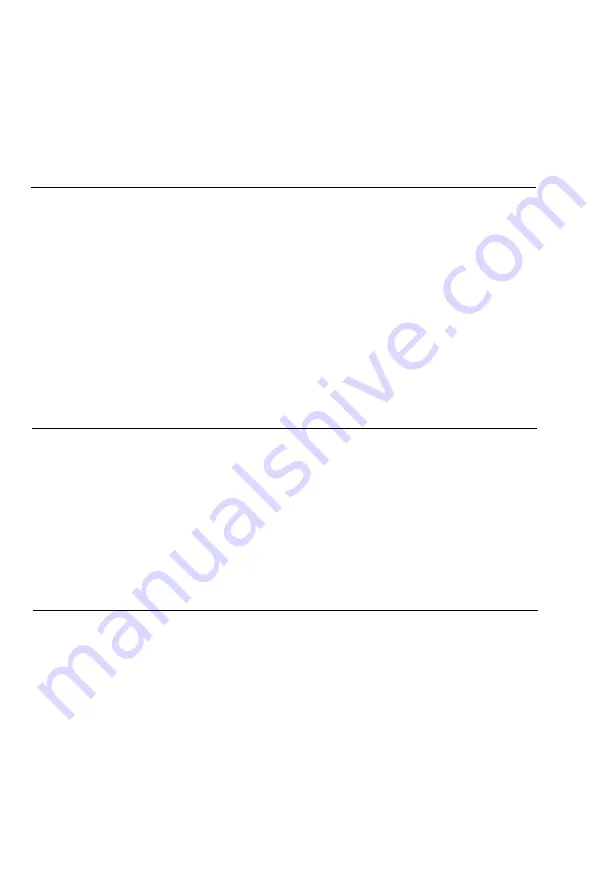
MSB Control
MSB means the Most Significant Bit. MSB control (ESC =, ESC >,
and ESC #) does not work for graphics or user-defined characters.
ESC =
Format:
ASCII code:
ESC
Decimal:
27 61
Hexadecimal: 1B 3D
Set MSB to 0
Comments:
Sets the MSB of all incoming data to 0. Some computers always
send data with the MSB set to
1,
which means that italics or
character graphics are always printed. ESC = can overcome this
problem.
ESC >
Format:
ASCII code:
ESC >
Decimal:
27 62
Hexadecimal: 1B 3E
Set MSB to 1
Comments:
Sets the MSB bit of all incoming data as 1.
ESC #
Format:
ASCII code:
ESC #
Decimal:
27 35
Hexadecimal: 1B 23
Cancel MSB Control
Comments:
Cancels the MSB control set by ESC = or ESC >.
9-12
Command Summary
Summary of Contents for LQ-860 - Impact Printer
Page 1: ...User s Manual EPSON 4 0 0 8 1 2 3 6 0 1 0 3 ...
Page 2: ...E P S O N L Q 8 6 0 User s Manual ...
Page 197: ...8 Close the printer cover and the paper guide cover 6 8 Maintenance ...
Page 299: ...Appendix Proportional Width Table A 2 Character Tables A 6 A l ...
Page 305: ......
Page 322: ......
Page 324: ......















































